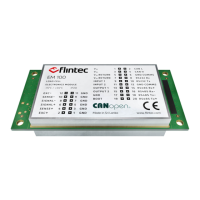EM100-F User Manual
0084293
Page 93 of 93
7. Approved Applications
The term ‘Approved’ applies whenever the weighing application is intended to be used for ‘legal-for-
trade’ weighing – that is, trade transactions and certain medical applications. Such applications are
bound by the legal metrology regulations of the relevant governments around the world, most
countries will comply with either the relevant ENs (Euro Norms) or the relevant OIML (Organisation
Internationale de Métrologie Légale) recommendations.
The EM100 has been approved as a component for use in weighing systems according to OIML
recommendation R61, the highest performance level approved being Class III, 10,000 intervals (e)
and n x 10,000 intervals (n=2, 3). The notified approval body is the Danish Electronics, Light &
Acoustics (DELTA/Force).
This approval will allow the use in approved weighing systems throughout Europe and in many other
countries of the World. To achieve approval for an application, it will be necessary to satisfy the
relevant governmental trading standards authority that the requirements of the various rules and
regulations have been satisfied. This task is greatly simplified if the key components of the
weighing system, namely the load cells and the weighing indicator or digitizer, are already approved
as ‘components’. Usually, discussions with the appropriate weighing equipment approvals officers
at the relevant national weights & measures office will then reveal the extent of any pattern testing
that may be necessary to ensure compliance.
7.1. Restrictions in Approved Applications
A variety of performance restrictions must come into force. These restrictions are the number of
display divisions, which become limited to 10,000 divisions and the sensitivity per display division
which becomes 0.3μV per division. Once installed in the application, an ‘approved’ application will
require ‘stamping’ by an officer of the relevant governmental department. This certifies the
equipment or system as being in accordance to the relevant regulations and within calibration limits.
7.2. The Traceable Access Code (TAC)
The user software must then provide a guard against improper access of the calibration commands
(see ‘Calibration Commands’ section). The EM100 features the ‘Traceable Access Code’ or TAC
method of controlling the access to the calibration commands group. This means a code is
maintained within the device and is incremented whenever any change to any of the calibration
commands is saved. When performing the ‘stamping’ test, the appropriate officer will make a note
of the TAC value and advise the user that any change to this code which occurs prior to the regular
re-inspection by the trading standards office, will result in legal prosecution of the user. The user
software is required as a condition of approval, to make the TAC available to the weight display
indicator or console, on demand.

